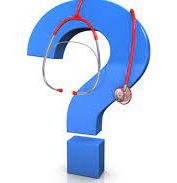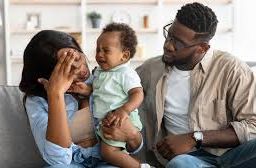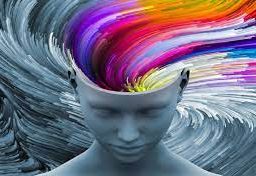
Essential Foley Catheter Care: Tips for Maintaining Hygiene and Comfort
The Foley Catheter, a vital medical device for urinary management, plays a pivotal role in both hospital and home care settings. Understanding its function, maintenance, and potential challenges is crucial for ensuring optimal patient comfort and safety.

A Foley catheter, named after its inventor, Dr. Frederic Foley, is a medical device designed to assist with the drainage of urine from the bladder when an individual is unable to do so naturally. It is commonly used in both hospital and home settings, and understanding how to care for it is crucial for patients and caregivers. Whether you or a loved one has a Foley catheter, understanding its purpose, proper care, and knowing the warning signs is crucial. In this post, we will offer essential information every patient should know about foley catheters.
 What is a Foley Catheter?
What is a Foley Catheter?
It is a thin, flexible tube inserted into the bladder through the urethra. It consists of two main parts: a drainage tube and an inflatable balloon. The other end of the catheter is connected to a drainage bag that collects urine. Once inserted, the balloon is inflated inside the bladder to keep the catheter securely in place, while the drainage tube allows urine to flow into a collection bag.
Indications for a Catheter
1. Urinary Retention: When an individual is unable to empty their bladder due to various medical conditions including urinary blockages, neurological conditions, other issues.
2. Post-Surgery: After certain surgeries, especially those involving the lower abdomen or pelvis, a catheter may be used temporarily to monitor urine output and prevent distention of the bladder.
3. Incontinence Management: In cases of severe urinary incontinence or when traditional methods fail.
4. Neurological Conditions: Individuals with certain neurological conditions, such as spinal cord injuries, may require a Foley catheter for bladder management.
5. End-of-life Care: In palliative care, catheters may be used to maintain comfort and dignity in patients with limited mobility.
6. Pressure Ulcer Prevention: In some cases, catheters are used to prevent pressure ulcers in patients with limited mobility.
Types Of Catheters
There are several types of catheters designed for various medical purposes. Each type serves a specific function based on the patient’s condition and treatment requirements. Here are some common types of catheters:
1. Foley Catheter (Indwelling Catheter): A Foley catheter is a flexible tube with an inflatable balloon at the tip. It is inserted through the urethra into the bladder and is used for draining urine in cases of urinary retention, surgery, incontinence, or when monitoring urine output during medical procedures. It remains in place for an extended period.
2. Intermittent Catheter (Short-Term Catheter): Intermittent catheters are used for temporary catheterization to empty the bladder. They are typically inserted as needed and then removed once the bladder is emptied. These catheters are commonly used by people with spinal cord injuries or neurogenic bladder dysfunction.
3. Condom Catheter (External Catheter): A condom catheter is a urinary device designed for males. It consists of a sheath that fits over the penis, connected to a drainage bag. It is used to manage urinary incontinence in men without the need for internal catheterization.
4. Suprapubic Catheter: A suprapubic catheter is surgically inserted through the abdominal wall directly into the bladder. It is often used when long-term bladder drainage is required, or there are issues with urethral catheterization.
5. Nasogastric (NG) Tube: While not a typical catheter, an NG tube is a flexible tube inserted through the nose and down the esophagus into the stomach. It is used for various purposes, such as feeding, draining stomach contents, or administering medication.
6. Central Venous Catheter (CVC): Central venous catheters are inserted into large veins, often in the chest or neck, for the delivery of medications, fluids, nutrition, or to facilitate blood draws. Types of CVCs include tunneled catheters (Hickman, Broviac), peripherally inserted central catheters (PICC), and port-a-caths.
7. Arterial Catheter (Arterial Line): Arterial catheters are inserted into arteries to monitor blood pressure continuously, draw blood for analysis, or sample blood gases. They are commonly used in critical care settings.
8. Hemodialysis Catheter: Hemodialysis catheters are large-bore catheters used for vascular access in patients with kidney failure undergoing hemodialysis treatments. They are usually inserted into a large vein in the neck or chest.
9. Epidural Catheter: Epidural catheters are placed in the epidural space of the spine to deliver pain relief medications or anesthesia for surgical procedures or labor and delivery.
10. Pulmonary Artery Catheter (Swan-Ganz): Swan-Ganz catheters are inserted through a large vein (often the jugular or subclavian) into the pulmonary artery to monitor cardiac function and provide important hemodynamic measurements in critical care settings.
11. Ureteral Catheter: Ureteral catheters are used to drain urine from the kidneys to the bladder or to deliver contrast dye during imaging studies, such as a retrograde pyelogram.
These are some of the most common types of catheters used in medical practice. The choice of catheter depends on the patient’s condition, the intended purpose, and the duration of use. Healthcare professionals carefully select the appropriate type of catheter to ensure safe and effective treatment.
What Every Patient Should Know
Dos:

1. Maintain Proper Hygiene: Wash your hands thoroughly before and after handling the catheter or drainage bag or performing any care-related tasks. This helps prevent the spread of infection.
2. Regularly Empty the Drainage Bag: Avoid letting the bag become too full, as it can pull on the catheter and cause discomfort. Do this when it’s about half full to prevent pulling on the catheter.
3. Change the Drainage Bag: Replace the drainage bag with a new, clean one regularly, following the manufacturer’s recommendations or as directed by a healthcare professional.
4. Secure the Catheter: Tape or fasten the catheter securely to your thigh to avoid unnecessary movement or tension on the catheter.
5. Stay Hydrated: Drinking enough fluids is essential to maintain good urinary health and prevent catheter-related complications.
6. Keep the Catheter Clean: Cleanse the area around the catheter insertion site gently with mild soap and water during regular bathing.
7. Keep the Drainage Bag Below Bladder Level: The drainage bag should always be kept lower than the bladder level to ensure that urine flows effectively and prevents backflow into the bladder.
8. Cleanse the Catheter Site: Gently clean the area around the catheter insertion site with mild soap and water during regular bathing or as instructed by a healthcare provider. Be gentle to avoid irritation.
Steps to empty a Foley catheter bag:
1. Wash your hands thoroughly with soap and water.
2. Place a clean container or bag on a stable surface, such as the floor, a table or countertop.
3. Locate the drainage spout at the bottom of the Foley catheter bag.
4. Open the drainage spout by flipping the lever or sliding the clamp, depending on the type of bag.
5. Hold the container or bag below the level of the Foley catheter bag to allow the urine to flow into it.
6. Allow the urine to completely drain from the Foley catheter bag into the container or bag.
7. Close the drainage spout by flipping the lever or sliding the clamp back into its original position.
8. Dispose of the urine in a toilet or designated waste container.
9. Wash your hands again thoroughly with soap and water.
Remember to always follow any specific instructions provided by your healthcare provider or nurse regarding the care and maintenance of your Foley catheter.
Don’ts:

1. Don’t Pull or Tug: Be cautious when moving or transferring; never pull or tug on the catheter.
2. Avoid Kinking or Twisting: Ensure the catheter tubing is free from kinks or twists to maintain urine flow.
3. Don’t Cut the Catheter: Never attempt to cut or adjust the catheter yourself. Seek medical assistance for any catheter-related issues.
Demystifying Myths
– Myth 1: Catheters Are Always Painful: Catheter insertion can be uncomfortable, but it should not cause significant pain. Any severe pain should be reported to your healthcare provider.
– Myth 2: Catheters Always Cause Infections: Proper care and hygiene can significantly reduce the risk of catheter-associated infections.
– Myth 3: You Can’t Shower with a Catheter: You can shower with a catheter, but it’s crucial to keep the catheter site clean and dry.
– Myth 4: Catheters Are Only for the Elderly: Catheters can be used in people of all ages when medically necessary.
When to Seek Urgent Medical Care

It’s crucial to recognize warning signs and seek immediate medical attention if you or a loved one with a Foley catheter experience:
– Signs of Infection: Such as fever, chills, foul-smelling urine, or increasing pain and redness around the catheter site.
– Blockage or No Urine Output: If the catheter becomes blocked or there’s no urine output for several hours.
– Severe Pain or Discomfort: Persistent, intense pain, especially in the lower abdomen or back and around the bladder or catheter insertion site.
– Bleeding: If you notice blood in the urine or around the catheter.
– Blood in the Urine: Hematuria may indicate trauma or another issue.
– Leakage or Disconnection: If the catheter becomes disconnected from the drainage bag.
– The catheter becomes dislodged or falls out.
Foley catheters can be a crucial part of medical care, but they require proper care and attention to avoid complications. By following these guidelines and being vigilant about potential danger signs, you can help ensure the safe and effective use of a Foley catheter at home. Remember that Foley catheter care is essential to minimize the risk of infection and ensure the patient’s comfort and well-being. If you have any questions or concerns about caring for a Foley catheter, don’t hesitate to contact a healthcare professional for guidance and support.
Disclaimer: The information provided in this content is for general informational purposes only. It is not intended as medical or healthcare advice, diagnosis, or treatment. Always seek the advice of a qualified healthcare professional with any questions you may have regarding a medical condition or healthcare decisions.
















